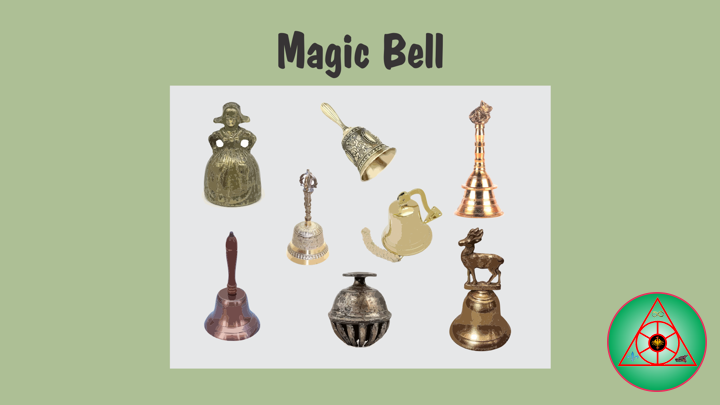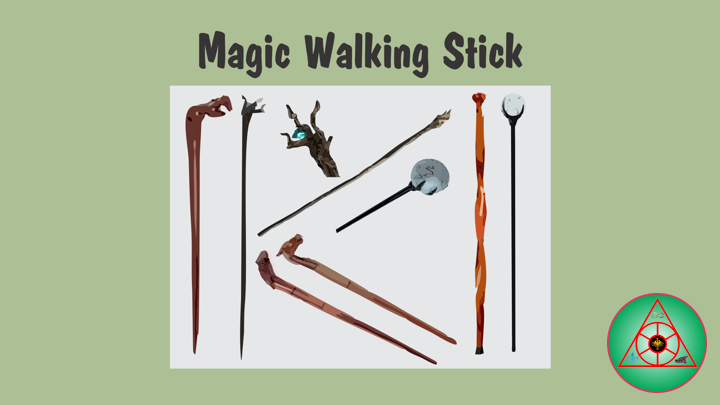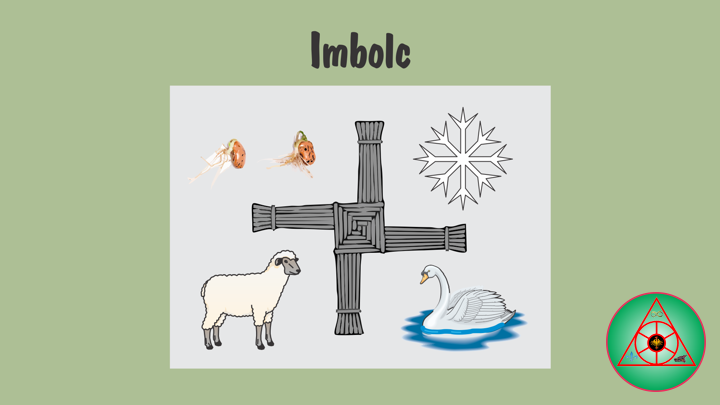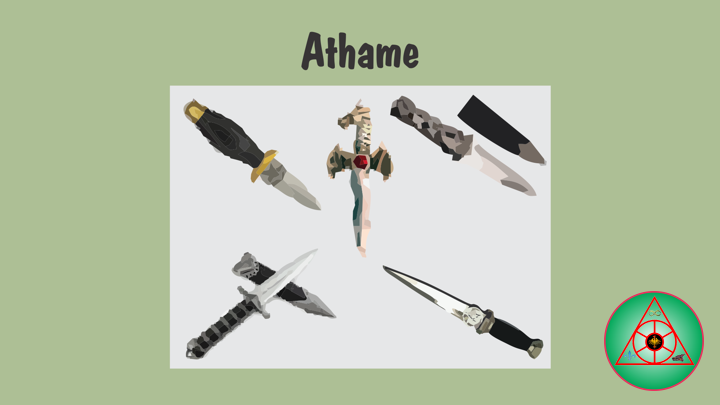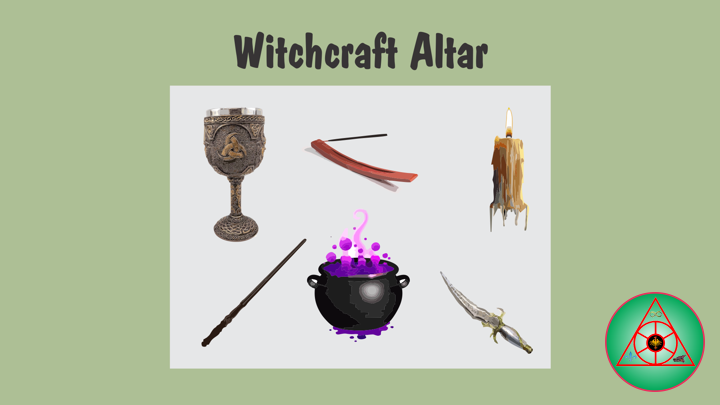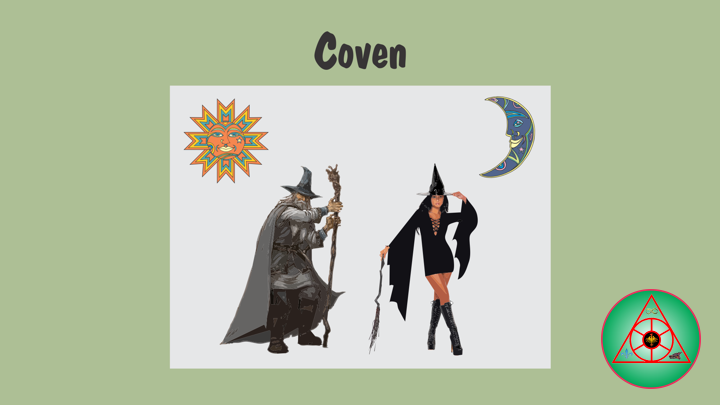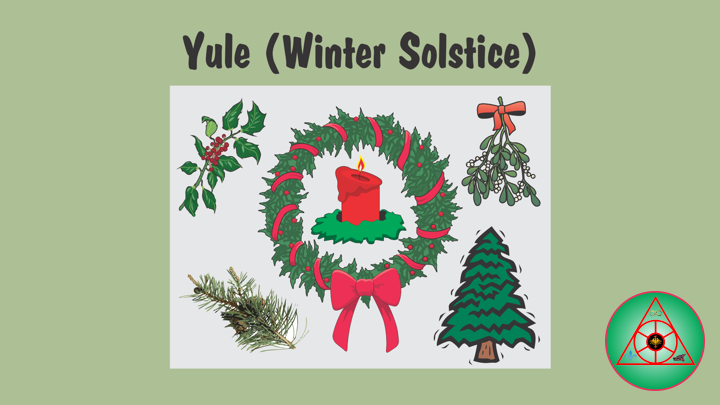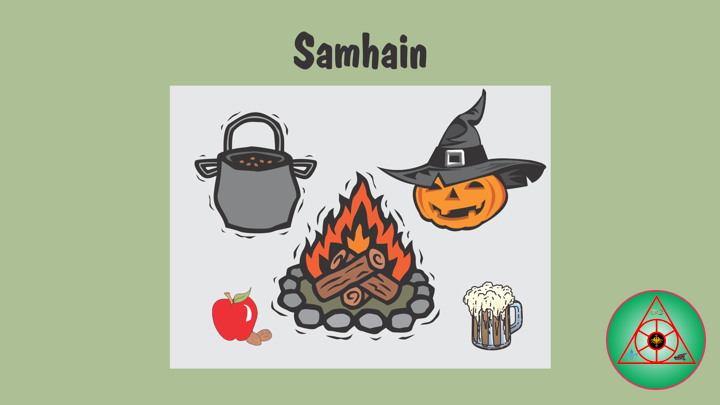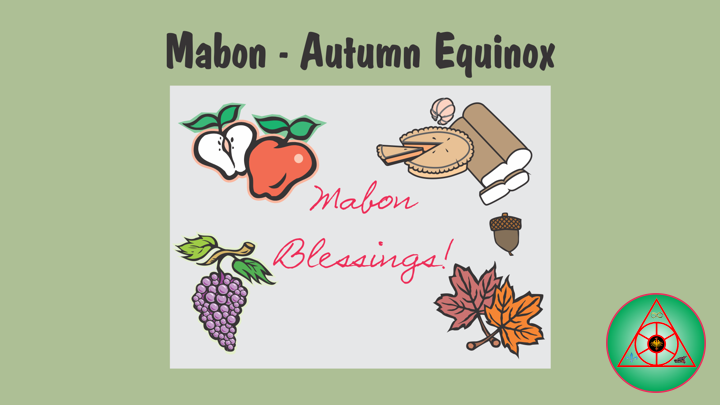Wheel of the Year
Wheel of the Year
——
#Magic #TLBWB #HighPriest #Witchcraft #Wizard #Witch #MagicBell #Bell #BookOfShadows #WheelOfTheYear #MagicalHerbs #MagicalOils #Incense #Pentacle #MagicCircle #MagicSpell #Grimoire
——
——
Magic Bell
Magic Bells are like the Voice of the Goddess. When you ring one, it brings the Divine’s attention to you. And your attention to the Divine. A Magic Bells with a lovely tone will call beautiful, healing energy to you. Magic Bells can also be used to clear energy. At the end of a ritual is a good time for this, but if unwanted energy crops up during a ritual, you can use the Magic Bell to disperse it.
Hundreds of years ago, rural folks knew that loud noise drove away evil spirits, and the bell is a prime example of a good noisemaker. The ringing of a Magic Bells causes vibrations which are the source of great power. Variations on the bell the use of a singing bowl. All of these can help bring harmony to a magical circle. In some forms of Witchcraft, the bell is rung to begin or end a rite, or to evoke the Goddess.
The Magic Bells traditionally is symbolic of the Great Goddess. The Magic Bells can be used during ritual to help invoke the Goddess. You may also see it used at each of the four quarters when calling quarters during ritual. If you choose to place a Magic Bells on your altar most traditions agree that it should be located on the left of your altar. The Magic Bells corresponds to the element water, and is a feminine energy. While you will not see it used by all Witches or Wizard, the bell is a tool that can be given importance in your magical workings if you so choose and treat it as a magical tool.
In ancient times the Magic Bells was believed to rid an area of negative entaties or energies. This can still be a purpose for it today. I have seen cleansing rituals that still involve using a Magic Bells to drive away spirits. In ancient times they use to hang the bells on doors and leave them strategically placed around the house to help keep away negative spirits and energy. This is a practice that you will still see used in households today.
When a Magic Bells is cleansed and consecrated to be used as a magical tool, it is believed that it can help to purify everyone that is present when it rings. For this reason, you will often see it used today at the beginning or ending of rituals that we do. Before beginning any magical working you can ring the bell to rid any negative energies, and call the attention of the spirits you wish to summon in your workings.
The vibration of the Magic Bells can help to stimulate the energy in your environment. It also helps to set your intention and inform your subconscious of the actions you wish to take. For those of you who may have a harder time with meditation the ringing of a bells can make entering meditation easier.
Follow Us
Languages Spoken and Written: English, French and Spanish.
eMail: lostbeardedwhite@sassquatch.org
Facebook: https://www.facebook.com/neosteam.labs.9/
YouTube: https://www.youtube.com/@thesass2063
Twitter: https://twitter.com/labs_steam
Pinterest: https://www.pinterest.com/NeoSteamLabs/
Instagram: https://www.instagram.com/luc.paquin/
The Lost Bearded White Brother
——
#Magic #TLBWB #HighPriest #Witchcraft #Wizard #Witch #MagicWalkingStick #WalkingStick #BookOfShadows #WheelOfTheYear #MagicalHerbs #MagicalOils #Incense #Pentacle #MagicCircle #MagicSpell #Grimoire
——
——
Magic Walking Stick
A walking stick is a device used by many people to facilitate balancing while walking. The walking stick has also historically been known to be used as a defensive or offensive weapon, and may conceal a knife or sword as in a swordstick. An is equipped with a steel point and may carry a hook or ice axe on top. More ornate sticks may be adorned with small trinkets or medallions depicting visited territory. Wooden walking-sticks are used for outdoor sports. They can be individually handcrafted from a number of woods and may be personalised with wood carving, or jewelry, or quartz, or stones, or metal engraving plaques.
Walking sticks are used by hikers for a wide variety of purposes: to clear spider webs, or part thick bushes or grass obscuring the trail, as a support when going uphill or a brake when going downhill, as a balance point when crossing streams, swamps or other rough terrain, to feel for obstacles in the path, to test mud and puddles for depth, and as a defence against wild animals.
Fashioned from an upturned sapling, gnarled staff serves as walking stick, magical rod and practical tool for the wandering Wizard of the woods and wilds. At home amid the beasts and trees, has largely eschewed the company of men for the solace of the forest and the companionship of its creatures. With twiggy protrusions serving as a bird’s perch and amid which a cool blue crystal nestles, the Wizard’s twisted staff is ever at his side, supporting him on his long, and frequently spontaneous, rambles through his forest home. His magic walking stick that has the power to take him and whoever he is holding by the hand to any desired place.
Due to the wet nature of these swamps certain trees become infected with a fungus that eats away at the base of the branches, leaving behind a diamond shaped canker when the brach dies off. Inevitably the fungus will kill the tree itself allowing for sustainable harvest, without impacting the local population.
The most common accessory, before or after purchase or manufacture, is a hand strap, to prevent loss of the stick should the hand release its grip. These are often threaded through a hole drilled into the stick rather than tied around. A clip-on frame or similar device can be used to stand a stick against the top of a table. In cold climates, a metallic cleat may be added to the foot of the cane. This dramatically increases traction on ice. The device is usually designed so it can be easily flipped to the side to prevent damage to indoor flooring. Different handles are available to match grips of varying sizes. Rubber ferrules give extra traction on most surfaces. Some walking stick have hollowed-out compartments near the top where flasks or vials of liquids or medication or chemicals or alcohol could be hidden and sprung out on demand.
Follow Us
Languages Spoken and Written: English, French and Spanish.
eMail: lostbeardedwhite@sassquatch.org
Facebook: https://www.facebook.com/neosteam.labs.9/
YouTube: https://www.youtube.com/@thesass2063
Twitter: https://twitter.com/labs_steam
Pinterest: https://www.pinterest.com/NeoSteamLabs/
Instagram: https://www.instagram.com/luc.paquin/
The Lost Bearded White Brother
——
#Magic #TLBWB #HighPriest #Witchcraft #Wizard #Witch #MagicWand #Wand #BookOfShadows #WheelOfTheYear #MagicalHerbs #MagicalOils #Incense #Pentacle #MagicCircle #MagicSpell #Grimoire
——
——
Magic Wand
A magic wand is a thin, hand-held stick or rod made of wood, stone, ivory, or metals like gold or silver. Generally, in modern language, wands are ceremonial or have associations with magic but there have been other uses, all stemming from the original meaning as a synonym of rod and virge, both of which had a similar development. A stick giving length and leverage is perhaps the earliest and simplest of tools. Long versions of the magic wand are usually styled in forms of staves or scepters, often with designs or an orb of a gemstone forged on the top.
Witchcraft, Mystical, Occult, And Religious Usage
In Pharaonic Egypt, toilette articles, weapons against possible enemies, amulets against serpents, were also left in the tomb, together with magic texts and a magic wand which enabled the soul to use them. In classical Greco-Roman mythology, the god Hermes or Mercury has a special wand called a caduceus.
In Witchcraft magic practitioners use several magical tools including wands for the channeling of energy-they serve a similar purpose to the athame although the two have their distinct uses. While an athame is generally used to command, a wand is seen as more gentle and is used to invite or encourage. Though traditionally made of wood, they can also consist of metal or crystal. Practitioners usually prune a branch from an Oak, Hazel, Spruce, Poplar, Pine, Cedar, Black Cherry, Walnut, or other tree, and then carve it and add decorations to personalize it. In Witchcraft the wand usually represents the element air, or sometimes fire, although contemporary wand makers also create wands for the elements of earth and water as well. The wand is most often used by Witchcraft in rituals, healing and spell casting.
There is some scholarly opinion that the magic wand may have its roots as a symbol of the phallus. It may also have originated as the drumming stick of a shaman, especially in Central Asia and Siberia, as when using it to bang on his drum or point, to perform religious, healing, and magical ceremonies.
Rugged and aged in appearance, this wand was designed for those with powerful intuition and an affinity for the magic of the natural world. Its warmth will draw those with strength, courage, and conviction. For the best or worst of times, this wand feels as exemplary as the one who wields it. Magic wands commonly feature in works as spell-casting tools. Wand length in 9 inches to 14 inches. Finish options, and color transition have the colors blended for a more gradual change, usually over about an inch. Danish, tung, and linseed oil.
Follow Us
Languages Spoken and Written: English, French and Spanish.
eMail: lostbeardedwhite@sassquatch.org
Facebook: https://www.facebook.com/neosteam.labs.9/
YouTube: https://www.youtube.com/@thesass2063
Twitter: https://twitter.com/labs_steam
Pinterest: https://www.pinterest.com/NeoSteamLabs/
Instagram: https://www.instagram.com/luc.paquin/
The Lost Bearded White Brother
——
#Magic #TLBWB #HighPriest #Witchcraft #Wizard #Witch #Imbolc #BookOfShadows #WheelOfTheYear #MagicalHerbs #MagicalOils #Incense #Pentacle #MagicCircle #MagicSpell #Grimoire
——
——
Imbolc
Imbolc is a Gaelic traditional festival. It marks the beginning of spring. It is held on 1 February, which is about halfway between the Yule (Winter Solstice) and the Ostara (Spring Equinox). Imbolc is mentioned in early Irish literature, and there is evidence suggesting it was also an important date in ancient times. It is believed that Imbolc was originally a pagan festival associated with the Goddess Brigid.
The festivities on the feast of Brigid did not begin to be recorded in detail until the early modern era. In recent centuries it was marked by the making of Brigid’s crosses and a doll-like figure of Brigid would be paraded from House-To-House by girls. Brigid was said to visit one’s home on the eve of the festival. To receive her blessings, people would make a bed for Brigid and leave her food and drink, and items of clothing would be left outside for her to bless. Brigid was also evoked to protect homes and livestock. Special feasts were had, holy wells were visited, and it was a time for divination.
It has also been argued that originally the timing of the festival was more fluid and based on seasonal changes. It is associated with the onset of the lambing season he beginning of preparations for the spring sowing, and the blooming of blackthorn. Holy Wells were visited, spring or small pool of water revered either in a pagan context, sometimes both. The water of holy wells is often thought to have healing qualities, through the numinous presence of its guardian spirit. They often have local legends associated with them as they were during some of the other Gaelic festivals. Visitors to holy wells would pray for health while walking sunwise clockwise was considered the “Prosperous Course”, turning from east to west in the direction of the sun, around the well. They would then leave offerings, typically coins. Water from the well was used to bless the home, family members, livestock, and fields. In Celtic regions, strips of cloth are often tied to trees at holy wells, known as clootie wells.
Imbolc is the traditional time for initiations. Initiation is a rite of passage marking entrance or acceptance into a group or society. It could also be a formal admission to adulthood in a community or one of its formal components. In an extended sense, it can also signify a transformation in which the initiate is “Reborn” into a new role. A person taking the initiation ceremony in traditional rites is called an initiate.
Brigid so loved as a pagan Goddess that her worship was woven. She is a Goddess of healing, poetry and smith craft. She is a Goddess of Fire, of the Sun and of the Hearth. Bridget brings fertility to the land and its people and is closely connected to midwives and new-born babies. She is the Triple Goddess, but at Imbolc she is in her Maiden aspect.
Other Ways to Imbolc
You don’t have to create an altar to celebrate Imbolc, although it can be a fun way to get your craft on. Other fun ways are to plant seeds, bake a cake light candles. As I’ve already mentioned, you can celebrate however you want. However, consider incorporating these symbols that are attributed to Imbolc:
- A Bridig Cross.
- The snowdrop.
- The swan.
- The flame.
- The serpent.
- Sheep.
- Imbolc colors are white, silver and green.
- Herbs of Imbolc are blackberry, coltsfoot, ginger.
- Trees of Imbolc are rowan and willow.
Follow Us
Languages Spoken and Written: English, French and Spanish.
eMail: lostbeardedwhite@sassquatch.org
Facebook: https://www.facebook.com/neosteam.labs.9/
YouTube: https://www.youtube.com/channel/UC5eRjrGn1CqkkGfZy0jxEdA
Twitter: https://twitter.com/labs_steam
Pinterest: https://www.pinterest.com/NeoSteamLabs/
Instagram: https://www.instagram.com/luc.paquin/
The Lost Bearded White Brother
——
#Magic #TLBWB #HighPriest #Witchcraft #Wizard #Witch #Athame #BookOfShadows #WheelOfTheYear #MagicalHerbs #MagicalOils #Incense #Pentacle #MagicCircle #MagicSpell #Grimoire
——
——
Athame
An athame is a ceremonial blade, generally with a black handle. It is the main ritual implement or magical tool among several used in ceremonial magic traditions, and by other neopagans. An athame can take many forms. Contrary to popular belief, athames are not required to have double-edged blades. Contemporary Witchcraft practitioners often choose a double-edged blade since this carries symbolic meaning. Some Witchcraft will choose a single edge athame and use the straight edge to ring the bell for rituals. The athame’s primary use is to channel and direct psychic energy, generally conceived as etheric fire. They are usually not supposed to harm or draw blood.
The ritual drawing of the boundary of the magic circle, also known as “Casting The Circle”, is usually done with an athame. The athame is associated with the magical element of fire, so the circle is considered to be cast in etheric fire. This fire is traditionally envisioned as blue, indigo or violet, although it may equally well be envisioned as other colors. When the circle is ritually purified after being cast, that is traditionally done with the remaining three elements air (Incense), water (Salt-Water), and earth (Salt), because the element of fire has already been imbued into the circle during the casting, by the use of the athame.
After the casting, the athame is the tool traditionally used to invoke the elemental guardians of the four directions, Calling The Quarters, typically by drawing invoking pentagrams at each quarter. As a Masculine Principle, the athame is often used in combination with the chalice, as Feminine Principle, evoking the act of procreation, as a symbol of universal creativity. The athame represents the magical element of fire, associated with the Sun and the Horned God; while the chalice represents the magical element of water, associated with the Moon and the Goddess. The union of the two then represents the union of God and Goddess, Male and Female, Sun and Moon, Fire and Water. The marriage of the Sun and Moon, the union of opposites, is an ancient idea in alchemy, and the Hieros Gamos or Sacred Marriage of God and Goddess is an even more ancient idea in pagan religions. This rite is done by dipping the athame into the chalice to bless the wine. This is a symbol of the Great Rite in Witchcraft rituals. Some modern Witchcraft traditions may prefer not to use iron blades, instead preferring alternatives such as copper, bronze or stone, such as obsidian. If they conceive of this casting in the traditional way, as a casting of etheric fire via a projection of psychic energy. One common way to do this is by using the four magical elements of Fire (Candle), Air (Incense), Water and Salt, and perhaps anointing the blade with an oil infused with magical herbs.
If they conceive of the circle casting as cutting a line in the air with the tool of air, then they may choose to purify the circle with the remaining three elements of fire, water, and eart, this would involve using a candle to purify the circle, and omitting the incense, since the circle has already been imbued with the element of air.
Follow Us
Languages Spoken and Written: English, French and Spanish.
eMail: lostbeardedwhite@sassquatch.org
Facebook: https://www.facebook.com/neosteam.labs.9/
YouTube: https://www.youtube.com/channel/UC5eRjrGn1CqkkGfZy0jxEdA
Twitter: https://twitter.com/labs_steam
Pinterest: https://www.pinterest.com/NeoSteamLabs/
Instagram: https://www.instagram.com/luc.paquin/
The Lost Bearded White Brother
——
#Magic #TLBWB #HighPriest #Witchcraft #Wizard #Witch #WitchcraftAltar #Altar #BookOfShadows #WheelOfTheYear #MagicalHerbs #MagicalOils #Incense #Pentacle #MagicCircle #MagicSpell #Grimoire
——
——
Altar
An altar is a structure upon which offerings such as sacrifices are made for religious purposes. Altars are found at shrines, temples, churches and other places of worship. They are used particularly in Pagan, Christianity, Buddhism, Hinduism, Judaism, Modern Paganism, and Witchcraft. Many historical faiths also made use of them, including Witchcraft, Roman, Greek, and Norse religion.
Witchcraft Altar
Witchcraft altars may be set up outside as well as indoors. Some Witchcraft dedicate an entire room to their practice while others use a temporary altar. A temporary altar can be any flat surface that can be moved easily such as a coffee table. More permanent altars are left up for the Wiccan to return to for their rites and rituals. Personal altars are those placed in a private bedroom, closet, or other space usually occupied by one person. They are used for practices of piety intended for one person.
A Witchcraft altar is a raised structure or place used for worship or prayer, upon which a Witchcraft practitioner places several symbolic and functional items for the purpose of worshiping the God and Goddess, casting spells, and/or saying chants and prayers. There are many types of altars Witchcraft may choose to use during ritual. Depending the rite they are performing, the material used for their altars may vary. This is because in many circles, different types of wood are believed to carry certain magical qualities. The altar is often considered a personal place where practitioners put their ritual items.
In the most basic form, an altar can be a single stone or a flickering candle that serves as a focal point for your meditation practice. If your spiritual practice is earth-based, your more formal altars may want to include a nod to each of the four directions. A more elaborate altar could include many elements that bring to focus a different energy that you would like to focus on. If you are creating an altar for group ritual, perhaps each member of the group brings an object to place on the altar to represent a facet of the work you are doing together. If you have a spiritual project that spans many days or sessions, you may want to bring a new object to the altar at the beginning of each session to refresh and deepen the practice.
Some Witchcraft arrange their altars to represent all four elements and directions. In the North the earth element is represented; in the east is air, in the south is fire, and in the west water. These elements can be represented in various ways, but generally do not vary in elemental and directional correspondences. When placing items on an altar or when a practice involving inviting the elements to be a part of the circle and lend their power a practitioner will move clockwise and when dismissing the elements they will move counter-clockwise.
Common items on a Witchcraft altar include athame, broom, candles, cauldron, chalice, incense, pentacle, wand, etc. Some of the items represent the Earth’s four elements, but elements may be represented more literally, with gems, salt, water, plant material, etc.
Follow Us
Languages Spoken and Written: English, French and Spanish.
eMail: lostbeardedwhite@sassquatch.org
Facebook: https://www.facebook.com/neosteam.labs.9/
YouTube: https://www.youtube.com/channel/UC5eRjrGn1CqkkGfZy0jxEdA
Twitter: https://twitter.com/labs_steam
Pinterest: https://www.pinterest.com/NeoSteamLabs/
Instagram: https://www.instagram.com/luc.paquin/
The Lost Bearded White Brother
——
#Magic #TLBWB #HighPriest #Witchcraft #Wizard #Witch #Coven #BookOfShadows #WheelOfTheYear #MagicalHerbs #MagicalOils #Incense #Pentacle #MagicCircle #MagicSpell #Grimoire
——
——
Coven
A coven is a group or gathering of Witch or Wizard. Lineaged Witchcraft is organised into covens of initiated Priests and Priestesses. Coven are autonomous and are generally headed by a High Priest and a High Priestess working in partnership, being a couple who have each been through their first, second, and third degrees of initiation. Occasionally the leaders of a coven are only second-degree initiates, in which case they come under the rule of the parent coven. Initiation and training of new Priesthood is most often performed within a coven environment, but this is not a necessity, and a few initiated Witchcraft are unaffiliated with any coven. Most covens would not admit members under the age of 18. They often do not advertise their existence, and when they do, do so through pagan magazines. Some organise courses and workshops through which prospective members can come along and be assessed.
A commonly quoted Witchcraft tradition holds that the ideal number of members for a coven is thirteen, though this is not held as a hard-and-fast rule. Indeed though the membership may be augmented by unaffiliated Witchcraft at “Open” rituals. That covens typically contained between five and ten initiates. They generally avoid mass recruitment due to the feasibility of finding spaces large enough to bring together greater numbers for rituals and because larger numbers inhibit the sense of intimacy and trust that covens utilise.
Initiation into a coven is traditionally preceded by an apprenticeship period of a year and a day. A course of study may be set during this period. In some covens a “Dedication” ceremony may be performed during this period, some time before the initiation proper, allowing the person to attend certain rituals on a probationary basis.
Lost Bearded White Brother is Witchcraft Solitary Practitioner also choose to study for a year and a day before their self-dedication to the religion.
With the rise of the Internet as a platform for collaborative discussion and media dissemination, it became popular for adherents and practitioners of Witchcraft to establish “Online Covens” which remotely teach tradition-specific Witchcraft to students in a similar method of education. However, because of potentially-unwieldy membership sizes, many online covens limit their memberships to anywhere between 10 and 100 students.
Follow Us
Languages Spoken and Written: English, French and Spanish.
eMail: lostbeardedwhite@sassquatch.org
Facebook: https://www.facebook.com/neosteam.labs.9/
YouTube: https://www.youtube.com/channel/UC5eRjrGn1CqkkGfZy0jxEdA
Twitter: https://twitter.com/labs_steam
Pinterest: https://www.pinterest.com/NeoSteamLabs/
Instagram: https://www.instagram.com/luc.paquin/
The Lost Bearded White Brother
——
#Magic #TLBWB #HighPriest #Witchcraft #Wizard #Witch #Yule #WinterSolstice #BookOfShadows #WheelOfTheYear #MagicalHerbs #MagicalOils #Incense #Pentacle #MagicCircle #MagicSpell #Grimoires
——
——
Yule (Winter Solstice)
It’s the holiday season, which is the time of year that we celebrate many Wizard and Witch favorite day. Put the Yule log on the fire, set the feast, and hang the mistletoe. Around December 21st, we gear up to celebrate Yule, also known as the Winter Solstice or Midwinter.
Throughout centuries and across cultures, we have gathered together in the darkest part of the season to hold festivals for light’s return. We’ll explore what Yule celebrates, and how to bring Winter Solstice blessings with magical, practical Yule traditions and ritual ideas.
Yule marks the shortest day and longest night of the year. This is when the sun begins, once again, to rise in the horizon, promising the start of a new seedtime; encouraging us to move forward and trust that spring will come. Yule is a way to celebrate rebirth.
Yule has been linked to the Old Norse word “Jól”. The word may have originally meant “Magic” or “Feast Of Entreaty”. It’s also perhaps the root of the English word “Jolly”.
In our heads we know the light will return. But in the darkness of Winter, can we be sure? Do our hearts believe what our heads tell us? Will the light keep its promises? We all have moments of darkness, when we don’t know how much deeper we will go before the light starts to return. The world has moments too, it understands us, and lives as we do.
Yule Traditions and Customs:
- Bonfires to light up the night.
- Crops and trees were cider poured on and around plants.
- Evergreen boughs, holly, and ivy decorated the home representing life, holly by the door invited good fortune into the home.
- Hanging mistletoe, considered a sacred and mystical plant by the Druids.
- The Yule log was burned through the night.
Symbols of Yule
- Herbs and Flowers: Bayberry, cinnamon, cloves, nutmeg, sage, evergreen, ivy, holly, laurel, mistletoe, oak, pine, yellow cedar, pine cones, frankincense, myrrh, wintergreen, apple leaf, and dried apple.
- Incense: Bayberry, pine, spruce, cedar, and cinnamon.
- Colors: Red, green, white, gold, and silver.
- Decorations: Holly, mistletoe, ivy, pine, pine cones, Yule Log, evergreen wreaths, and evergreen garlands.
- Foods: Pork, poultry, apples, cookies, cakes, nuts, wine, cider, and mulled cider.
Follow Us
Languages Spoken and Written: English, French and Spanish.
eMail: lostbeardedwhite@sassquatch.org
Facebook: https://www.facebook.com/neosteam.labs.9/
YouTube: https://www.youtube.com/channel/UC5eRjrGn1CqkkGfZy0jxEdA
Twitter: https://twitter.com/labs_steam
Pinterest: https://www.pinterest.com/NeoSteamLabs/
Instagram: https://www.instagram.com/luc.paquin/
The Lost Bearded White Brother
——
#Magic #TLBWB #HighPriest #Witchcraft #Wizard #Witch #Samhain #BookOfShadows #WheelOfTheYear #MagicalHerbs #MagicalOils #Incense #Pentacle #MagicCircle #MagicSpell #Grimoires
——
——
Samhain
Samhain is a Witchcraft religious festival originating from an ancient Celtic spiritual tradition. In modern times, Samhain is usually celebrated from October 31 to November 1 to welcome in the harvest and usher in “The Dark Half Of The Year”. Celebrants believe that the barriers between the physical world and the spirit world break down during Samhain, allowing more interaction between humans and denizens of the Otherworld.
Samhain is one of the major festivals of the Wheel of the Year, for many Witchcraft the most important festival of all. It is the third and final harvest festival of nuts and berries and a fire festival. All the harvest is in, all is complete, it is the end of the cycle of birth and growth, it is the point of death. The seeds of the harvest have fallen deep into the dark earth, they are unseen, dormant, and thus apparently lifeless.
Ancient Celts marked Samhain as the most significant of the four quarterly fire festivals, taking place at the midpoint between the Mabon and the Yule. During this time of year, hearth fires in family homes were left to burn out while the harvest was gathered. After the harvest work was complete, celebrants joined with High Priest to light a community fire using a wheel that would cause friction and spark flames. The wheel was considered a representation of the sun and used along with prayers. Cattle were sacrificed, and participants took a flame from the communal bonfire back to their home to relight the hearth.
The God, as Sun King is sacrificed back to the land with the seed until the Yule, and the Goddess, now as Crone, mourns Him until His rebirth at Yule. He travels the Underworld learning its wisdom. This is the time of the descent into darkness, of pre-conception, out of which new life, new ideas, will eventually emerge. Traditionally the veils between the worlds are at their thinnest now. Boundaries dissolve and all is laid bare. It is time to honour and offer hospitality to, our ancestors.
At Samhain the dark half of the year commences. It is a truly magical time. Death is always followed by rebirth and while this is the end of the old year, it is the beginning of the new year. For the Celts the day did not begin at dawn, it began at sunset, it began with darkness. Light is always born out of darkness, they are inseparable, interdependent, and necessary. Darkness is fertile with “All Potential”. With the beginning of this dark phase comes the opportunity to rest and reflect on the past and to dream of new beginnings. The seed now hidden in the earth will germinate in its season. Look for the seeds in yourself.
Honouring The Ancestors
Honouring your ancestors is a very special thing to do at this time and can be done in many simple ways. Think about all those departed souls from your life, both family and friends, children may wish to remember pets even, place photographs of them on your altar. Offer them your hospitality, welcome their presence into your home. At your Samhain festival, consider laying an extra place for them to join you at the table, cook and eat their favourite dishes, talk about them, remember them, bring them closer. You and your children can make an offering for departed pets by leaving some dog food outside on Halloween night, many night creatures appreciate this offering. Be careful what you put outside, we used to put out bread and milk.
Follow Us
Languages Spoken and Written: English, French and Spanish.
eMail: lostbeardedwhite@sassquatch.org
Facebook: https://www.facebook.com/neosteam.labs.9/
YouTube: https://www.youtube.com/channel/UC5eRjrGn1CqkkGfZy0jxEdA
Twitter: https://twitter.com/labs_steam
Pinterest: https://www.pinterest.com/NeoSteamLabs/
Instagram: https://www.instagram.com/luc.paquin/
The Lost Bearded White Brother
——
#Magic #TLBWB #HighPriest #Witchcraft #Wizard #Witch #Mabon #AutumnEquinox #BookOfShadows #WheelOfTheYear #MagicalHerbs #MagicalOils #Incense #Pentacle #MagicCircle #Spell #Grimoires
——
——
Mabon – Autumn Equinox
This festival is now named after the the God of Welsh mythology, Mabon. He is the Child of Light and the son of the Earth Mother Goddess, Modron. Autumn Equinox, around September 21, is the time of the descent of the Goddess into the Underworld. With her departure, we see the decline of nature and the coming of winter.
Here is another point of perfect balance on the journey through the Wheel of the Year, its counterpart being Ostara or the Spring Equinox. Night and day are again of equal length and in perfect equilibrium, dark and light, masculine and feminine, inner and outer, in balance. But we are again on the cusp of transition and from now the year now begins to wane and from this moment darkness begins to defeat the light. The cycle of the natural world is moving towards completion, the Sun’s power is waning and from now on the nights grow longer and the days are are shorter and cooler. The sap of trees returns back to their roots deep in the earth, changing the green of summer to the fire of autumn, to the flaming reds, oranges and golds. We are returning to the dark from whence we came.
Mabon, “Great Son”, is a Welsh god. He was a great hunter with a swift horse and a wonderful hound. He may have been a mythologized actual leader. He was stolen from his mother, Modron, “Great Mother”, when he was three nights old.
All along, however, Mabon has been dwelling, a happy captive, in Modron’s magical Underworld, Madron’s womb. Only in this way can he be reborn. Mabon’s light has been drawn into the Earth, gathering strength and wisdom enough to become a new seed. In this sense, Mabon is the masculine the male fertilizing principle seasonally withdrawn.
Celebrate Mabon, but typically the focus is on either the second harvest aspect, the balance between light and dark. This, after all, is the time when there is an equal amount of day and night. While we celebrate the gifts of the earth, we also accept that the soil is dying. We have food to eat, but the crops are brown and going dormant. Warmth is behind us, cold lies ahead. Here are a few rituals you may want to think about trying.
- Setting Up Your Mabon Altar: Celebrate the Mabon Sabbat by decorating your altar with the colors and symbols of the late harvest season.
- Create a Mabon Food Altar: Mabon is a celebration of the second harvest season. It’s a time when we’re gathering the bounty of the fields, the orchards, and the gardens, and bringing it in for storage.
- Ten Ways to Celebrate the Autumn Equinox: This is a time of balance and reflection, following the theme of equal hours light and dark. Here are some ways you and your family can celebrate this day of bounty and abundance.
- Honor the Dark Mother at Mabon: This ritual welcomes the archetype of the Dark Mother and celebrates that aspect of the Goddess which we may not always find comforting or appealing, but which we must always be willing to acknowledge.
- Mabon Apple Harvest Rite: This apple ritual will allow you time to thank the gods for their bounty and blessings, and to enjoy the magic of the earth before the winds of winter blow through.
- Hearth And Home Protection Ritual: This ritual is a simple one designed to place a barrier of harmony and security around your property.
- Hold a Gratitude Ritual: You might want to consider doing a short gratitude ritual as a way of expressing thankfulness at Mabon.
- Mabon Balance Meditation: If you’re feeling a bit spiritually lopsided, with this simple meditation you can restore a little balance into your life.
Follow Us
Languages Spoken and Written: English, French and Spanish.
eMail: lostbeardedwhite@sassquatch.org
Facebook: https://www.facebook.com/neosteam.labs.9/
YouTube: https://www.youtube.com/channel/UC5eRjrGn1CqkkGfZy0jxEdA
Twitter: https://twitter.com/labs_steam
Pinterest: https://www.pinterest.com/NeoSteamLabs/
Instagram: https://www.instagram.com/luc.paquin/
The Lost Bearded White Brother
